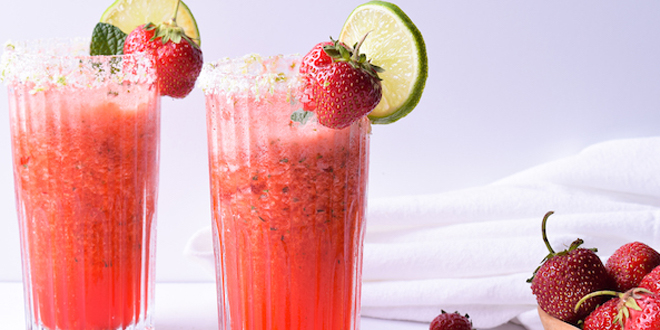Whether people with diabetes can drink juice has been an ongoing debate. Fruit juices are usually loaded with sugar which inevitably affects blood sugar levels. But juices don’t have to be completely taboo in a diabetes diet. Read on for more information on how juice impacts diabetes. Plus, get tips on how you can occasionally choose some juices as part of a healthy diabetes lifestyle.
What is the impact of fruit juice on blood sugar levels?
Many juices are high in calories and sugar, causing blood sugar levels to spike. This can increase your risk of hyperglycemia. In fact, many juices have a high glycemic index, which is the measure used to reflect the impact of individual foods on blood sugar levels.Consistently high blood sugar levels can lead to many diabetes-related complications.
But not all juice will increase your diabetes risk. One recent study showed that there was no association between drinking 100% pure fruit juice and an increased risk for type 2 diabetes. A previous study showed that pure juice does not have a significant effect on glycemic control either.
That said, even a product claiming to be 100% pure may contain added sugars, so read the nutrition labels carefully. Consume any juice in moderation and keep an eye on your blood sugar levels to ensure they’re not getting out of whack.
Does all juice contain the same amount of sugar?
The amount of sugar in juice will vary depending on type and portion size. Pulpy vegetable juices, for example, have far less sugar and calories than typical fruit juice. Juice ‘cocktails’ or ‘juice-flavored’ beverages usually feature very little real juice and are comprised mostly of water and sugar.
While freshly squeezed orange juice may have more nutrients than store bought, surprising to many, the calorie and sugar content can still be significant. A popular store brand of orange juice, Tropicana 100% Pure Orange Juice No Pulp, has 110 calories and 23 grams of sugar per glass, whereas a freshly squeezed glass of OJ would be 112 calories and 20.9 grams of sugar.
See the chart below for examples of how juices can vary in calories, carbs and sugar.
| Juice* | Calories | Carbs (grams) | Sugar(grams) |
|
Fresh Orange
Tropicana 100% Pure Orange Juice No Pulp |
112
110 |
25.8
27 |
20.9
23 |
| Apple | 117 | 29 | 27.1 |
| Cranberry (cocktail) | 136 | 34.2 | 30 |
| Fresh Grapefruit
Simply Grapefruit |
96
100 |
22.7
25 |
22
25 |
| Tomato (no salt added) | 41 | 10.3 | 8.7 |
| Lemonade (concentrate) | 528 | 137.3 | 131.6 |
*Serving size= 8 ounces (1 cup or 250mL)
[source is www.calorieking.com and fatsecret.com]
The Canadian Nutrient Files, published by Health Canada, is also a useful database that can tell you the nutrients in commonly consumed foods.
Always be sure to read product labels to ensure you’re not consuming a juice with too much sugar, even when there’s been no sugar added.
What is the recommended daily juice consumption?
According to Canada’s Food Guide, drinking water is still the best way to hydrate because of the higher sugar content in fruit juices and fruit concentrates. The Guide also recommends choosing whole or cut vegetables and fruit over juice to access more of the important nutrients in each, including minerals, vitamins and fibre.
Try adding fruits and herbs (e.g. blackberries + mint) to your cold and hot water for a flavour boost. Or cut calories and sugar by mixing your juice with water.
Read more on what to drink when you have diabetes here.
What about juicing?
If you’re not familiar with juicing, it’s a method that involves putting raw fruits and vegetables into a machine and extracting their juices. This can be a good way to control sugar and maintain most of a food’s natural vitamins and minerals, but its natural fibre is stripped in this process.
For people with diabetes, the occasional juicing is fine, but it’s best to avoid juices with a higher ratio of fruit to vegetables. If you opt for juicing vegetables, use those that contain little carbohydrates (e.g. green, leafy vegetables) and add berries instead of other fruit because they too are lower in carbohydrates. Again, it’s best to eat whole fruits and vegetables when possible to get the fibre in addition to other nutrients.
Read more on diabetes and juicing here.
What are some suggested ways to use juice in a diabetes diet?
You don’t have to eliminate all juices in order to maintain a healthy diet. If you watch portion size and use moderation, drinking juice on occasion shouldn’t be an issue. Also consider adding fruit and vegetables to water-based drinks for a healthier option too.
Here’s the recipe for a refreshing strawberry-rich margarita mocktail. Find other ideas for some delicious frozen drinks for a diabetes diet here.
At the end of the day, drinking water and eating whole fruits and vegetables is a better alternative to having juice. If you’re going to indulge, just watch your portion size and do so in moderation.
 Diabetes Care Community Learn, connect and care
Diabetes Care Community Learn, connect and care



